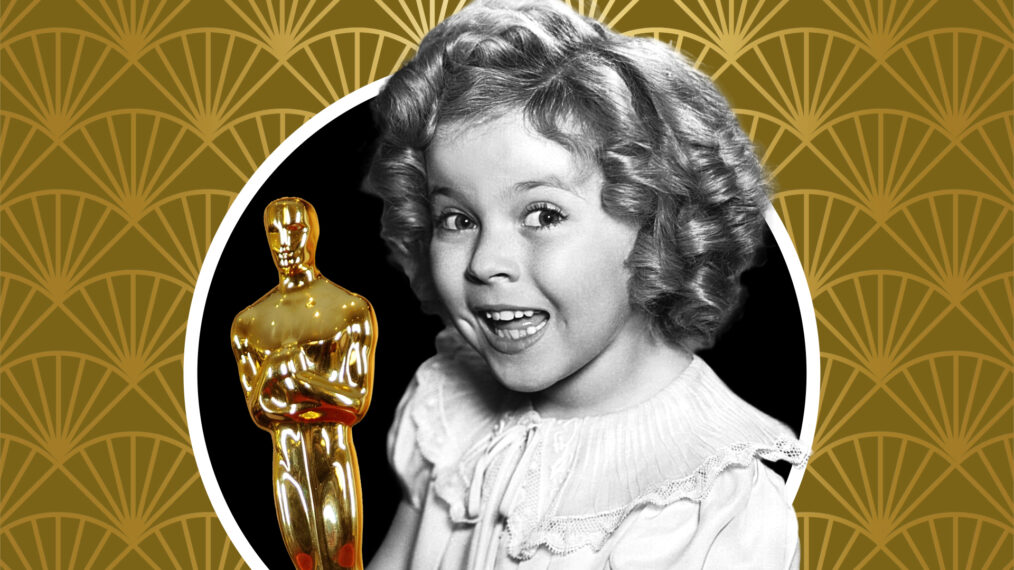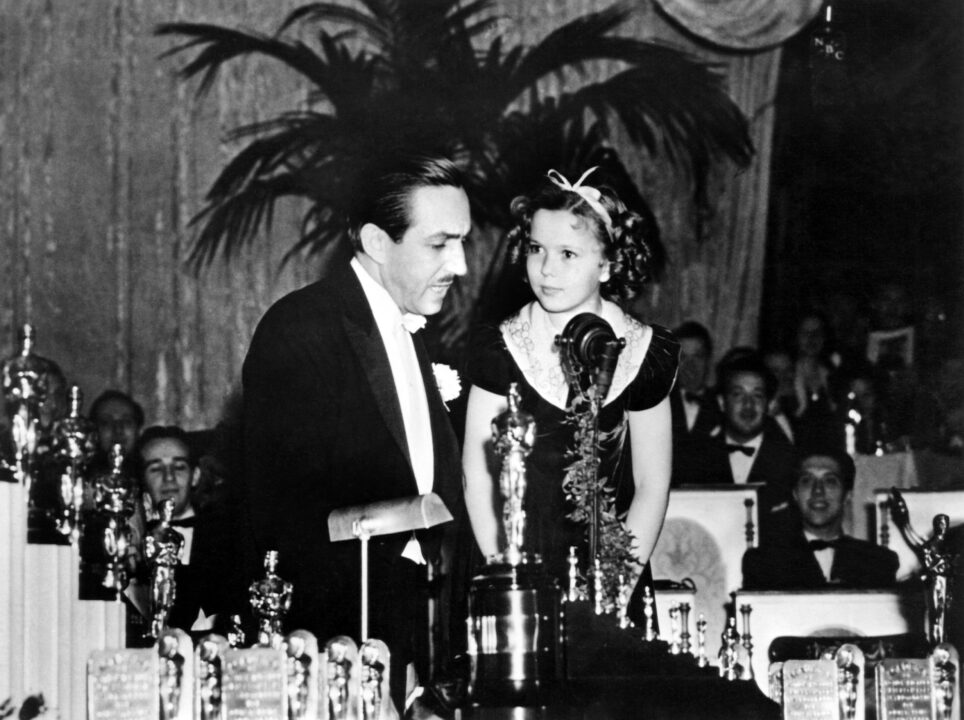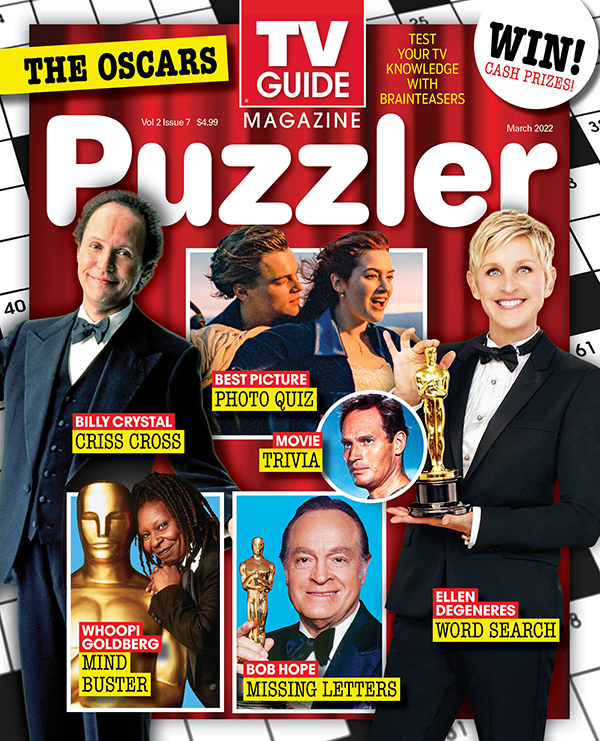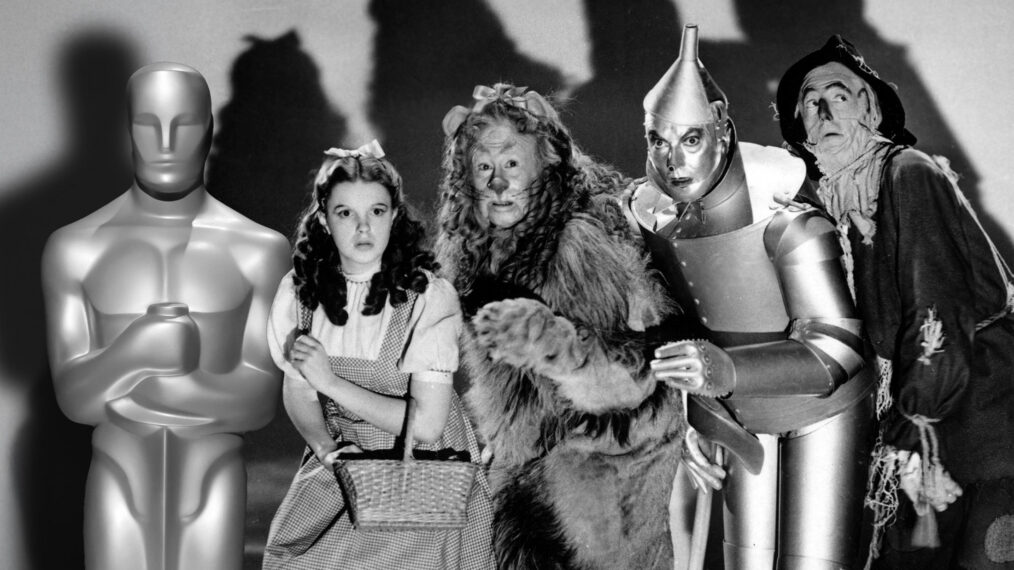Have You Ever Heard of the Juvenile Oscar? All About the Discontinued Award Shirley Temple Once Won

Did you know that there is a type of Oscar so rare that only a dozen people can claim to have won one? And to make it even stranger, the first recipient of this Oscar was still waiting for her permanent front teeth to come in when she took the stage to accept her win. If you’ve never heard of the Academy Juvenile Award — AKA the Juvenile Oscar — here’s everything you need to know about this unusual and now discontinued award.
What the heck is a Juvenile Oscar?
In 1931, nine-year-old Jackie Cooper was nominated for Best Actor for his work in the kid-centered comedy Skippy. He lost to Lionel Barrymore, but the Academy took notice of both the quality of Cooper’s work and how much audiences loved child actors. Recognizing that kids could be at a disadvantage with the critics, in 1934, the Academy of Motion Picture Arts and Sciences (AMPAS) added a new entry to its stable of “Special Awards”: the Academy Juvenile Award or Juvenile Oscar.
The award itself was a mini version of an actual Oscar, standing just seven inches tall — about half the size of the real thing. Like its larger counterpart, the trophy featured a golden knight holding a crusader’s sword atop a reel of film.
The first winner: Shirley Temple

Everett Collection
With her bouncy curls, shining eyes and burbling voice, Shirley Temple was both a box-office and pop culture darling in the ’30s. Making her first silver screen appearances in 1932, the charming cutie pie, who could sing and dance as well as act, was only six but had well over a dozen pictures under her belt when she earned the first Juvenile Oscar in 1934 to celebrate “her outstanding contribution to screen entertainment during the year 1934.”
Temple made a dozen pictures that year alone, including the iconic Bright Eyes and Little Miss Marker.
A shared award in 1938
With Temple ruling the box office in the early and mid ’30s, four years would pass by until the next Juvenile Oscar was handed out. Make that, two Juvenile Oscars. Eighteen-year-old Mickey Rooney and 17-year-old Deanna Durbin shared the honor “for their significant contribution in bringing to the screen the spirit and personification of youth, and as juvenile players setting a high standard of ability and achievement.”
Rooney had made more than two dozen films, plus a series of self-titled shorts by the time he claimed his statuette — and he’d earn his first “real” Oscar just two years later for Babes in Arms.
The pretty, perky Durbin would soon overtake Temple as a box office draw. By age 21, she was the highest-paid woman in America and the highest-paid female movie star in the entire world. But her roles didn’t reflect that power and by 1948, Durbin left Hollywood and acting altogether.
1939: Garland gets her only Oscar

Everett Collection
With the groundbreaking The Wizard of Oz redefining filmmaking and breaking box office records left and right, there was little doubt that its star, teenage Judy Garland, would take the Juvenile Oscar in 1939. She also arguably deserved the real deal — though Garland would go to her grave without ever securing a regular Oscar.
Though they never dated, Garland did win the heart of Mickey Rooney, her costar in the “Andy Hardy” films. In a 1992 interview, Rooney said “There was no love greater in my life than my love for Judy Garland. She was ‘my girl’ and in my heart, we belonged together.”
In 1958, Garland reported her statuette stolen, setting in motion a series of scandals tracing back to Garland’s former husband Sidney Luft.
A five-year Gap post-Garland
Five more years would pass before Garland’s Meet Me in St. Louis costar Margaret O’Brien would earn the 1944 Juvenile Oscar for her work in that film and others. The then 7-year-old O’Brien had become one of the most popular child actresses of the time, starring in the much-remade The Canterville Ghost, Music for Millions with Jimmy Durante and Meet Me In St. Louis alongside former Juvenile Award Honoree Judy Garland.
Bob Hope hosted that year’s ceremony and dubbed the Juvenile Oscar the “Oscarette.” The nickname didn’t stick. O’Brien’s award was later stolen by the family maid and remained missing for more than 4 decades until it was returned to the grateful actress in 1995.
Two for the (record) books
![1945: PEGGY ANN GARNER [special Oscar for most promising juvenile star] with her A TREE GROWS IN BROOKLYN co-star JAMES DUNN [Best Supporting Actor] reunite by rubbing noses, 3/7/46](https://www.remindmagazine.com/wp-content/uploads/2025/02/peggy-ann-garner-oscarette-913x720.jpg)
Everett Collection
In 1945, the award went to Peggy Ann Garner, best known as Francie Nolan in the beloved screen adaptation of Betty Smith’s A Tree Grows in Brooklyn. And in ’46, Claude Jarman Jr. earned the statuette as the deer-defending Jody in the tearjerker The Yearling.
“Never been so thrilled”
In 1948, the Juvenile Oscar was awarded to 12-year-old Czech-born Ivan Jandl, Jr. for his work in Montgomery Clift war drama The Search, which also won Best Writing, Motion Picture Story. Jandl was back in Prague when the ceremony took place, so his statuette was shipped to him there.
The following year, Disney star Bobby Driscoll earned the award. As he accepted his trophy, Driscoll charmed the crowd, proclaiming, “I don’t ever think I’ve been so thrilled in my life.” All 13 years of it.
And in 1950, another dual award was presented to Scottish-born actors Jon Whitely and Vincent Winter for their work as adorably tenderhearted baby-nappers in the BAFTA winning The Little Kidnappers.
The end of “the Oscarette”
![1962: PATTY DUKE [Best Supporting Actress, THE MIRACLE WORKER] with ED BEGLEY [Best Supporting Actor, SWEET BIRD OF YOUTH], 1963](https://www.remindmagazine.com/wp-content/uploads/2025/02/patty-duke-oscar-598x720.jpg)
Everett Collection
In 1960, 14-year-old Hayley Mills took home the final Juvenile Oscar in for her work as the title character in Disney’s Pollyanna — a role that also earned the “Best British Actress” BAFTA and the “Most Promising Newcomer” Golden Globe. Her award was stolen too. Though the mini mold was broken, then Academy president David Rubin presented Mills with a full-size replacement in 2022.
Perhaps taking notice of its counterpart awards giving full honors to outstanding teen actors, the Academy awarded 16-year-old prodigy Patty Duke the Best Supporting Actress Oscar for her remarkable work in The Miracle Worker — the first young person to win a traditional Oscar.
Since then, two more youthful actors have taken home an Oscar — 10-year-old Tatum O’Neal for 1973’s Paper Moon, and 11-year-old Anna Paquin for ’83s The Piano.
Should the Academy bring back the Juvenile Oscar? Tell us your thoughts in the comments!

The Oscars
March 2022
Test your knowledge on the award ceremony's most memorable hosts and the movies that won.
Buy This Issue
